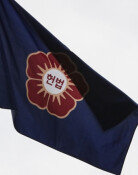DNA of Extinct Korean Tiger Identified
DNA of Extinct Korean Tiger Identified
Posted December. 17, 2009 09:31,
Did a dead tigress leave genes?
The now-extinct Korean tiger was the same species as the Siberian tiger, but changed its genetic characteristics to adapt to the environment of its habitat, the National Institute of Biological Resources said yesterday.
The Incheon-based think tank said it reached this conclusion after conducting a genetic inspection of flesh cuts from the breast of a stuffed tigress on display at an elementary school in Mokpo, South Jeolla Province.
It had two of the 1,240 genes representing genetic characteristics different from the Siberian tigers. The Korean tiger was smaller than its Siberian counterpart, which lives in northern territories, with a skin color that was a darker brown or bright red tone than the Siberian tigers.
The Korean tigers stripes were bigger and clearer than those of the Siberian tiger.
Han Sang-hoon, head of the institutes vertebral animal section, said, The Korean tiger adapted to the geography of South Korea, which has less rough mountains and more broadleaf trees than northern regions and smaller snowfall.
We will announce the genetic information confirmed through the stuffed tigress in an international journal next year.
The genetic analysis of the stuffed tigress presents genetic samples of Korean tigers. The data will play an important role in the effort to revive the Korean tiger and preservation of its genetic legacy.
Tigers are classified into eight species according to regional habitat. Experts say about 500 Siberian tigers, the biggest of the eight, live in North Korea, China and Russias northeast territories.
The stuffed tigress was caught by a farmer near the Buddhist Bulgap Temple in Yeonggwang County, South Jeolla Province, in February 1908. The feline was around 10 years old at the time and is believed to have measured 160 centimeters long and 95 centimeters tall and weighed 180 kilograms.
Shojiro Haraguchi, a Japanese national who lived in Korea at the time, bought the tigress, stuffed it, and donated to Yudal Elementary School in Mokpo. Japanese who attended the school during Japans colonial rule of Korea visit the school about five times a year to see the stuffed tiger.
peneye09@donga.com
Headline News
- Med professors announce intention to leave hospitals starting Thursday
- Bridge honoring Sgt. Moon Jae-sik unveiled in Pennsylvania
- Chief of Staff Chung tells presidential secretaries to stay away from politics
- US FTC bans noncompete agreements
- N. Korea launches cyberattacks on S. Korea's defense companies







